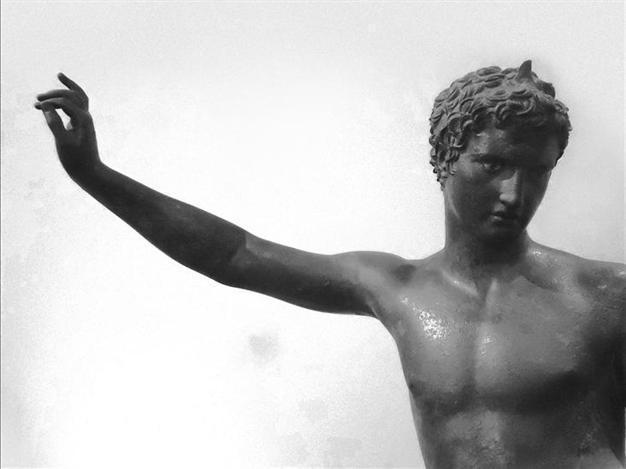US photographer seeks the ancient Kallos
ISTANBUL

Garrick has for years taken Ancient Greek civilization, the birthplace of Western art, as his focus and is now returning to a familiar space.
The Sismanoglio Megaro of the Greek General Consulate in Istanbul is hosting a photography exhibition titled “Seeking the Ancient Kallos” by the acclaimed U.S. artist Joshua Garrick, curated by Iris Kritikou and designed by Marios Voutsinas.The exhibition was previously presented last fall with great success at the National Archaeological Museum in Athens, and after Istanbul, it will travel to the exhibition space of the Greek General Consulate of New York.
Garrick has for years taken Ancient Greek civilization, the birthplace of Western art, as his focus and is now returning to a familiar space, setting out an integrated conceptual and aesthetic exhibition inspired by the museum closest to his heart: the National Archaeological Museum of Athens.
The ideal raw materials – the unexpected and dazzling perspectives on the museum exhibits, caught by Garrick’s exceptionally sensitive lens, are printed in various sizes on specially treated DiBond aluminum using a special cutting-edge technique, which gives the photographic print an almost tangible depth, transforming an organic discourse between the artist’s works and the ancient sculptures.
“Recording Ancient Kallos,” the absolute Platonic beauty which gives birth to pure love and reveals the comforting significance of a beautiful work of art, Garrick’s gaze and lens wander over the visible, but also the intangible aspects of the sculptures with which he chooses to examine, charging the viewer with a vibrant need to re-evaluate the desire of an exceptionally current dialogue about what is excessive and what is moderate; about youth and decay and endurance; about life and death; beauty and how the gaze is shattered by its unexpected absence.
Plato considered that behind each work of art that is considered beautiful lies the concept of ideal beauty, the archetype of beauty itself as reflected by the ethereal celestial forms. Kallos is what the soul once knew (the anamnesis or memory), but has since forgotten upon arrival into the world. The work of art is what is called upon to lead people once again to the ideal, unearthly and all-unifying morphe, the form of forms, the objective Kallos or Beauty.
By setting out his exciting work regarding the National Archaeological Museum of Athens and discussing, yet again, that absolute love and pure beauty, which inspired Greek art, Garrick discusses the form of beauty and the beauty of form, breaching the boundaries of a divine universe; unfolding melancholy shades of desires and unpublished events; narrating tales of love and powerful passion and reminding his viewers that beauty is “the object of an intense longing, which often goes unfulfilled.”
Criteria of harmony
Garrick’s shining photographs propose an imaginary narrative, a new way of seeing, capturing in unparalleled fashion the individual beauty, as well as the secret breath of every single sculpture.
The artworks were created by using the criteria of harmony, the theme as well as the aesthetic atmosphere which were sought after by the artist. The visitor will be welcomed by an exceptional sculpture gallery of tangible beauty, a series of “instants” recording memories of the gaze, creating an imaginary promenade, which seeks to please and rivet the gaze, offering generously views into the unseen interior land of each sculpture.
The titles proposed by Garrick for each artwork discuss life and death; youth and old age; power and humility; order, symmetry and economy; beauty and pain; joy and loss; victory and defeat; love and denial; mortality and immortality: they were translated into Greek with absolute fidelity to the traces and qualities of emotion and the aesthetic tangibility, which in each instance are left behind by his photographic lens.
Taking their leave of the ancient sculptures and their readings by Garrick, visitors to the exhibition are called upon to ponder their own relationships with beauty: Fear of its loss; or the hope that arises from awareness that it did in fact once exist.
The exhibition will continue through March 9.
















